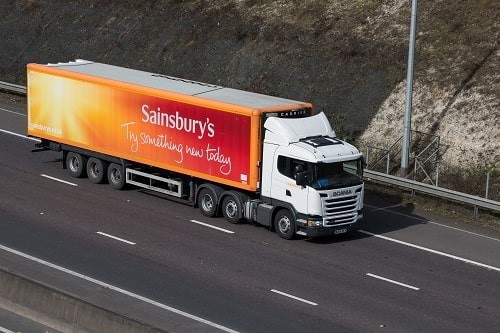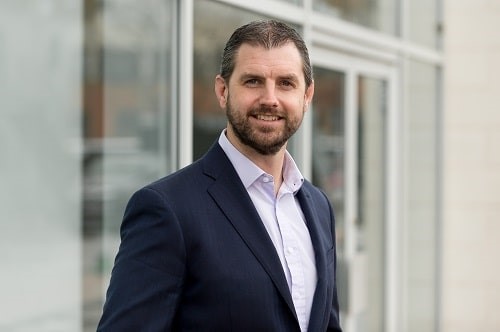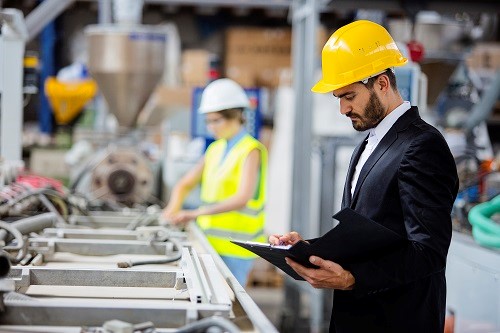The use of technology to improve safety systems and manage risk information is becoming more relevant and integrated than ever before. Safety Management finds out how to build a risk map to focus on major risks.
Features
Technology in action
This is a story that’s easy to tell: Sainsbury’s, one of the largest supermarket chains in the United Kingdom, is trying to optimise their enormous amount of safety information, collected over different areas, over hundreds of sites and over the years to better use it to solve safety issues and predict trends. On the other side of the story, we have Alcumus, a provider of technology-led compliance and risk management solutions.
They have partnered in the journey to manage effectively the information and, accordingly, Sainsbury’s safety and health risks. In this case, both Sainsbury’s and Alcumus have found common ground to go beyond information collection and analysis to create a preventative safety and health strategy, one where knowledge plays a key role in decision-making, efficiency and future planning.
 Road safety is one of the risks managed by Neil’s team at Sainsbury’s. Photograph: iStock/Jaroslaw Kilian
Road safety is one of the risks managed by Neil’s team at Sainsbury’s. Photograph: iStock/Jaroslaw Kilian
It is not a new partnership. Sainsbury’s has been working with Alcumus for over 15 years to collect data, both on individual sites and for the business as a whole, on near misses, incidents, injuries, enforcement contacts and visit reports. But around three years ago, Sainsbury’s needed to prioritise where to spend time and wanted to look at both lagging and leading indicators to create a Safety Risk Map.
Today, Sainsbury’s uses the Alcumus Info Exchange software, specifically the Risk Map module, tailored to Sainsbury’s requirements. This software, which has been running for the past two years, imports data from a variety of sources including Info Exchange and Excel spreadsheets into software, providing a straightforward centralised dashboard.
To know how the safety map works and how this technological development fits within the organisation Safety Management talked to Neil Lennox, head of group safety and insurance at Sainsbury’s, about the main risks and hazards in his company.
“Most of our incidents relate to the things you’d expect in our stores – slips and trips, manual handling and either striking or being struck by roll cages or trolleys,” he says. “Given that we have almost 30 million visits from members of the public every week, that’s probably not a great surprise.
“As a business we undertake pretty much every safety activity and have every risk you can think of; we have asbestos, hazardous substances, road risk, construction and, of course, we also must deal with food safety, cleaning and hygiene, pest control, temperature and date control. These are all significant risks that must be managed. If there is a risk or hazard out there, we probably deal with it somewhere in the estate!”
 Neil Lennox, Sainsbury’s head of group safety and insurance.
Neil Lennox, Sainsbury’s head of group safety and insurance.
How have risks been managed traditionally
“Like every business, we have risk assessments, safe working practices and various levels of training in place to cover all these issues," continues Neil. "We also have a series of tools to promote relevant weekly or periodic focus areas that are based on different risks. We have had fairly traditional audit processes in place to check on compliance for many years and these have, traditionally, been a key control.“
When and why did you start introducing risk management software
“We started using software to capture our accident and incident data over 20 years ago and have gradually developed this over time. As we have added different pieces of information such as audit output, colleague opinion, third-party checks and safety professional or operational management opinions, we felt that we needed to do more with the data and developed this into a Risk Map rating for each store to help us to focus on the right areas of risk.”
This was the moment when Alcumus, a company which has been working together with Sainsbury’s for around 15 years, came on board with a new solution. Alyn Franklin, its CEO, wishes that organisations introduce risk management software as early possible, but he concedes that it is not always the case.
Alyn says: “The reality is that usually most organisations introduce risk management software when their data can no longer be managed effectively in Excel spreadsheets and/or when their performance has reached a plateau.
 Alyn Franklin, CEO of Alcumus
Alyn Franklin, CEO of Alcumus
“As to why they should do so, it really is about adopting a proactive approach to risk management and eventually, as Neil, in Sainsbury’s, has done, a preventative strategy. Knowledge is key to achieving this and software enables you to collect data in greater volumes and in a more consistent manner. This provides that invaluable insight to spot trends and continuously improve.
“The operational benefits that software brings should also not be overlooked. Technology solutions can remove the duplication of effort involved with data collection, automate the production of reports and remove the legacy systems you no longer need to maintain because you have all your data in one place. All these factors add up to a strong return on investment, in addition to the reduction in claims and fines that are typically experienced with a proactive approach.
For Neil Lennox, the changes after introducing the Risk Map software are clear. “We have become much more risk-focused and less obsessed with the audit result – after all, this is only a snapshot in time," he says. "The conversations across the company have changed to become discussions around specific areas of risk and are much more focused on how we can manage or eliminate the risk, rather than just looking at compliance."
Far beyond their collaboration, Neil and Alyn, share a common view about the influence of technology in the H&S industry.
Neil: At times, we are all overwhelmed with data and, while having everything accessible at the touch of a button is incredibly valuable, you can’t see the ‘wood for the trees’. Technology can help us to predict issues before they happen, and we can start to identify the patterns of events or issues across a range of different locations or pieces of equipment.
By getting an early warning that the performance of a piece of equipment has started to deteriorate through real-time condition monitoring, we can attend to it before it breaks down or causes an incident. If we can get the exception reporting fine-tuned, we can bring the things that we need to be aware of to the top of the pile and look forward much more, rather than trying to learn from the past.
Alyn: The increasing use of technology by all generations, particularly using mobile phones and tablets, is really putting safety in the hands of the worker. Whether it’s an app to easily record a near-miss that could prevent an accident from happening in the future, to a wearable device that monitors an employee’s exposure to hand-arm vibration, there is little doubt that technology is making workplaces safer.
 Alyn: "Technology will flood the health and safety profession with invaluable data to improve performance."
Alyn: "Technology will flood the health and safety profession with invaluable data to improve performance."
Predictive analytics, Artificial Intelligence and industry 4.0 are all buzzwords in health and safety right now. However, the industry is only starting to really consider how they can convert their safety data into actionable trends, insight and conclusions that will help them prevent accidents from happening and identify their risks more proactively. Neil and Sainsbury’s are a great example of this in action.
What will be the role of the H&S manager in a world led more and more by technology
Neil: I think we will all need to become much more adept at interpreting and using data to judge risk and issues. I also think we will need to be more comfortable with doing less ‘generic’ audits and inspections and going where the data leads us.
Alyn: Keeping up with technological advancements will most definitely become as integral as keeping up with legislation changes. I feel that technology will flood the health and safety profession with invaluable data to improve performance. The challenge will be harnessing that data in the most effective way, not only to prevent accidents from happening but to improve processes, procedures, audits, risk assessments, training and culture.
How prepared are you for the use of robots as co-workers of your regular workforce at Sainsbury’s
Neil answers carefully: “I think we are still a little way off from this! Not so much in the safety world but just from a human, personal perspective. We already have robots and unmanned systems in several areas, but they are quite separate and I’m not sure we are quite ready for the robotic picker in a store! Having said that, we are looking at and trialling Artificial Intelligence in several areas – for example, things like cleaning machines that don’t need human intervention. I am sure we will see them in other areas before long.”
FEATURES

Sedentary working and how to combat the ‘sitting disease’
By Gavin Bradley, Active Working on 05 April 2024
Prolonged and excessive sitting poses a major risk to our health, but the Get Britain Standing campaign and On Your Feet Britain Day on 25 April are a great way of encouraging workers to sit less and move more.

Company culture and wellbeing: a crucial link
By Bex Moorhouse, Invigorate Spaces on 05 April 2024
Investing in measures to support worker wellbeing will be ineffective unless the company culture genuinely incorporates values like teamwork, involvement, flexibility and innovation.

Office design and culture: happier and healthier staff – or the opposite?
By Guy Osmond, Osmond Ergonomics on 03 April 2024
Applying ergonomic principles to workstation set-ups and ensuring the physical environment supports neurodivergent people are just some of the ways of creating an office where everyone can thrive, but a supportive and positive organisational culture is vital too.


